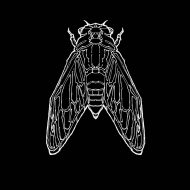Something I wrote about The Picture of Dorian Gray by Oscar Wilde.
“It is said that passion makes one think in a circle. Certainly with hideous iteration the bitten lips of Dorian Gray shaped and reshaped those subtle words that dealt with soul and sense, till he had found in them the full expression, as it were, of his mood, and justified, by intellectual approval, passions that without such justification would still have dominated his temper. From cell to cell of his brain crept the one thought; and the wild desire to live, most terrible of all man’s appetites, quickened into force each trembling nerve and fibre. Ugliness that had once been hateful to him because it made things real, became dear to him now for that very reason. Ugliness was the one reality. The coarse brawl, the loathsome den, the crude violence of disordered life, the very vileness of thief and outcast, were more vivid, in their intense actuality of impression, than all the gracious shapes of art, the dreamy shadows of song. They were what he needed for forgetfulness. In three days he would be free.” (The Picture of Dorian Gray, Chapter 16)
Created as a character of aesthetic beauty, Dorian Gray manifests Oscar Wilde’s conflicted views of moral beauty and artistic beauty. In this paragraph, Dorian is on his way to the opium den where he indulged himself with vice and evil. Under the influence of Lord Henry, a firm pursuer of physical pleasure, and the judgement of Basil Hallward who was the ideal figure of morality and a performer of classical art, Dorian Gray struggled between the two and finally leaned toward Lord Henry’s side. Walking astray from the traditional view of beauty, Dorian discovered the hypocrisy in classic art forms and realised that the authenticity of life is actually more beautiful than the unrealistic or ideal image of a fake representation. If the readers were to consider this passage as a unification of ugliness (or reality) and beauty, it then became the perfect elucidation of this novel in general, in that Oscar Wilde’s elegant and stylishly luxurious writing style was essentially celebrating the flowers of evil as its content. The beauty within the ugliness that Dorian learned to appreciate was in a broader sense an attribute of this novel as an art piece. This whole book was crafted in a particular way to become this giant sarcasm of its own form in the 19th century. It became a huge metaphor of itself.
